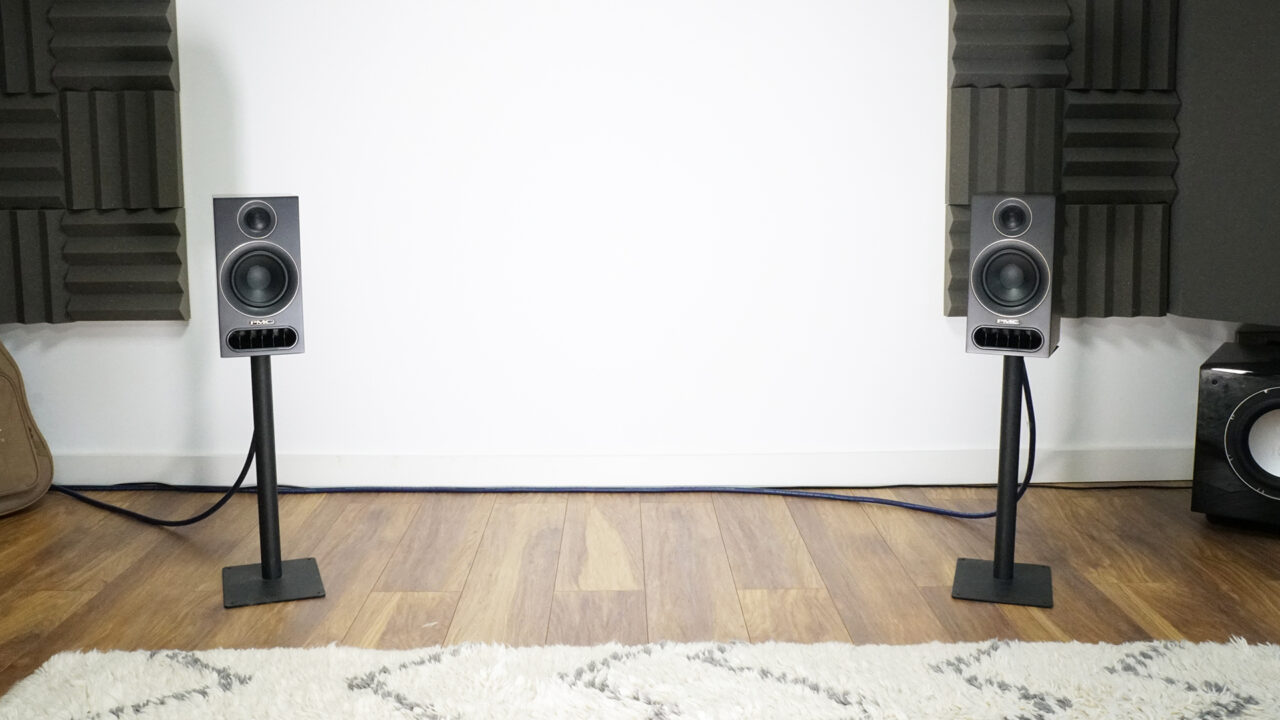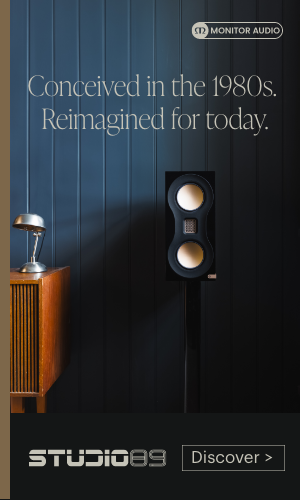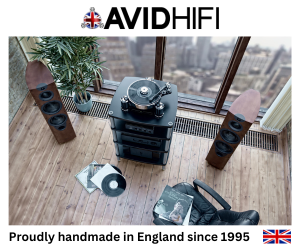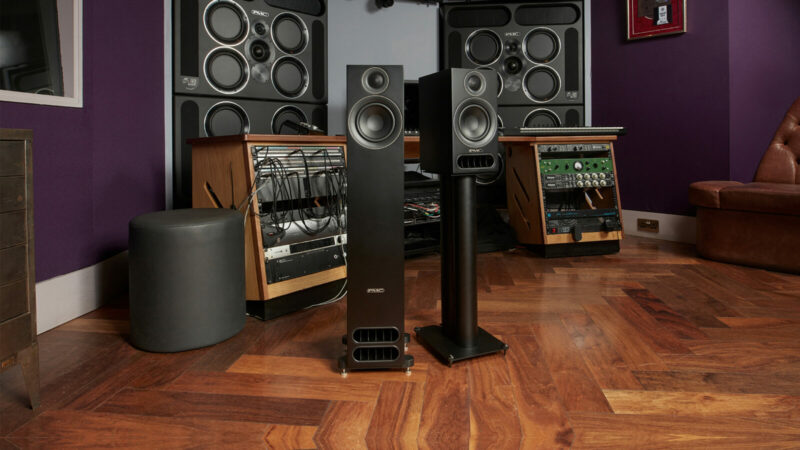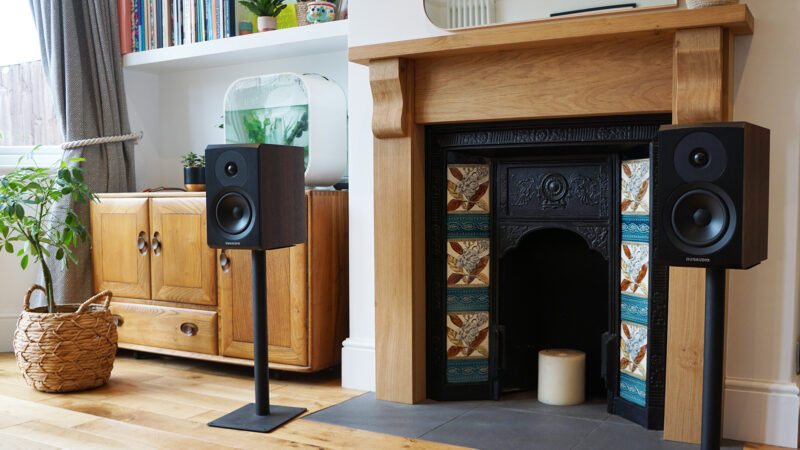Like a select few rivals including ATC, Bowers & Wilkins and Dynaudio, PMC is one of only a handful of loudspeaker brands that can claim genuine studio pedigree.
Founded in 1991 by Peter Thomas (then of the BBC) and Adrian Loader (of FWO Bauch), the Professional Monitor Company, to credit its full title, knows a thing or two about accurate loudspeaker designs good enough for mastering and music making, as well as home replay. In fact so prestigious is its legacy, PMC bagged an Emmy for its contribution to recording excellence, borne out across some of the biggest film scores in history, from Titanic through to the Mission Impossible franchise.

PMC’s prodigy1’s silky black aesthetic more than hints at its studio credentials
Mission possible
What sets its domestic approach to speaker design apart from its main rivals is the brand’s continued investment in transmission line topology, referred to as its ‘Advanced Transmission Line’ tech (ATL for short).
And what this means in practical terms is that unlike standard sealed or ported loudspeaker cabinet enclosures which rely mainly on damping, the sound from the back of PMC’s bass woofers is directed into long, folded (for extended length) damped pathways inside their cabinets, before exiting via dedicated slots. This approach tends to allow for greater control of the bass driver’s energy to get the most out of it, with cabinet and woofer working in harmony.
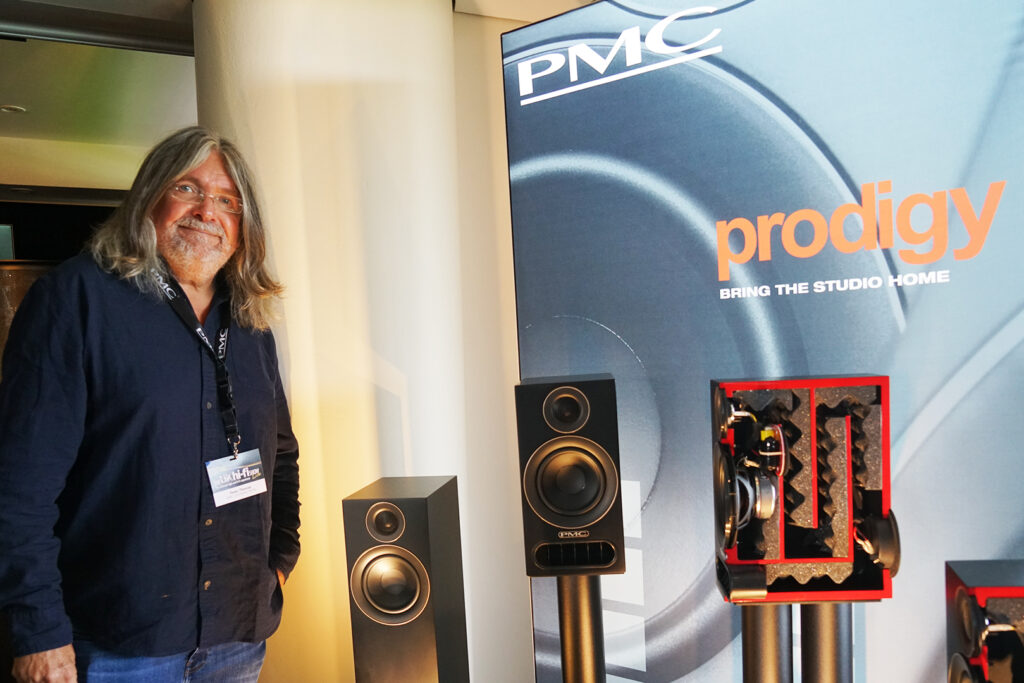
PMC Founder Peter Thomas proudly showing off the prodigy1’s folded transmission line internals at this year’s UK Hi-Fi Show Live
The downside to this approach for a manufacturer is that every cabinet size requires its own tailored transmission line internals, compared to ‘standard’ loudspeakers which often just beef up a box and add more drivers for their higher priced models. For PMC this therefore requires a much more tailored cabinet for each model, and can go someway to explaining why, in non-transmission line speaker ranges, there’s often one or two models that really stand out in performance compared to the rest, because the cabinet size and driver configuration are that little bit better matched (often referred to as the ‘sweet spot’ in the range).
Studio origins
Launched back in May 2023, and positioned under its twenty5i series (with sloping cabinets and real wood finishes), PMC’s new prodigy line represents its most affordable range, with the prodigy5 floorstander costing £1,995 and the prodigy1 standmount priced at £1,249.
Both prodigy models share the same driver complement, with a 5.25″ (133mm) mid/bass driver and 1″ (27mm) tweeter.
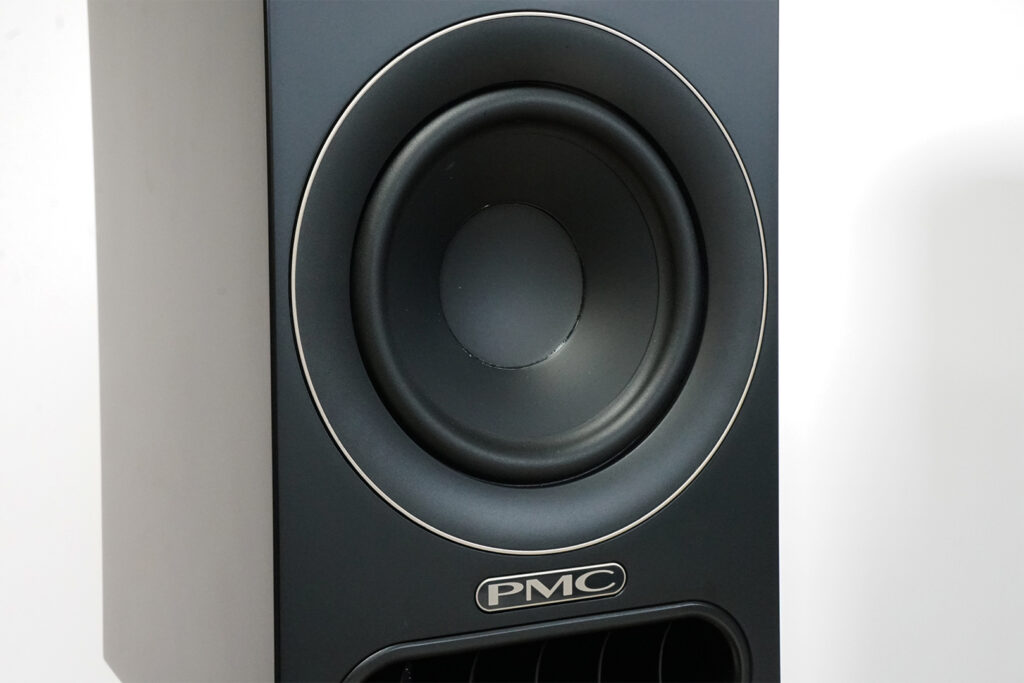
133mm bass driver is given plenty of breathing space with it large surround aiding dissipation
Starting with the woofer, this is an inverted large dome type formed from natural fibres that’s made exclusively for PMC (and also features in its custom install ci series, which is now widely used in many a mixing studio or QC reference room, including Capitol, UMG, Interscope and Netflix to name a few).
The tweeter is a soft dome type, again made only for PMC and is lifted from its result6 active studio monitor, underlining the prodigy range’s approach of cherry picking the key components from PMC’s studio models for domestic duties, while retaining their DNA (you could be listening to music that was mastered using the very same PMC tweeter/woofer that you’re now playing it back on at home).
Illustrating their no nonsense build, the tweeter is nestled behind a studio inspired protective metal mesh insert within a short waveguide. And that grille will come in handy, as there’s no fabric full cover as standard, but you can specify one should you wish for an extra ninety-five quid.

27mm soft dome tweeter’s protective grille is reminiscent of a microphone, again alluding to the live studio vibe
Catch a cab
Sized at 320/165/237mm (HWD) the prodigy1 feels compact yet proportionate. So much so they haven’t had to resort to the current trend of overlapping drivers, so that each one gets plenty of breathing space with ample surrounds.
The cabinets are made of high density MDF, with wall thicknesses varying between 12mm and 18mm. And being a transmission line, they’re more heavily internally braced than a standard speaker by default, because of the extra internal material needed for their transmission loading, as the exploded model in the pic above with Peter perfectly illustrates. For the prodigy1, this means four internal panels linking the cabinet’s side walls, bringing increased structural rigidity.
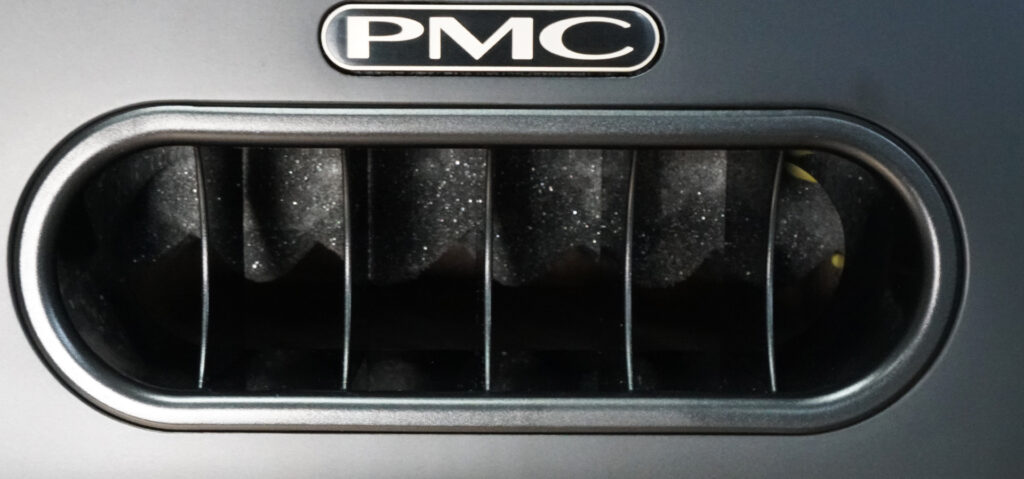
Up close with the prodigy1’s aerodynamic Laminair transmission vent, designed to reduce turbulence for higher efficiency and greater airflow control
And this is borne out in the flesh, as unboxing them reveals a light yet strong feeling package, like a finely tuned triathlete that’s rock solid without the bulk.
The final piece of the front panel hardware is PMC’s Laminair transmission line vent, sitting below the main drivers. With a shape that’s entirely sonically motivated, I can’t help but be reminded of a grimace emoji 😬, but maybe that’s more of a reflection on my social media addiction (as evidenced across our Insta, X, Facebook and YouTube channels, in case you’re not yet following us 😉).
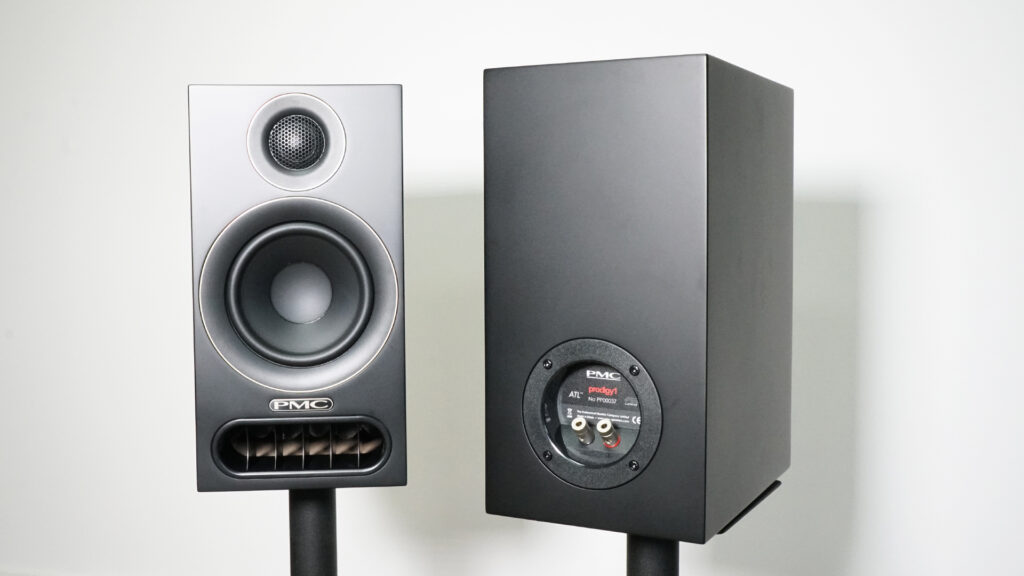
Not a screw head in sight makes for a nicely finished product. Single speaker terminals negate bi-wiring for their crossover, which feature 12dB octave filters
Performance
Installed in my 4.8×6.8m listening room, partnering amplification is Roksan’s Attesa that recently impressed us. Costing £1,600, it represents the type and price bracket of amp you’d typically drive the PMCs with, and with over 80W on offer into 6 ohms, it’s also not short on power, which the prodigy1’s welcome with their 6 ohm/87.5dB load/sensitivity.
Source components are courtesy of Primare and VPI. Spaced two metres apart, three metres from my listening position and toed so that their sonic axis crosses around a metre behind my listening position garners the best results.
With their front firing transmission vents, the PMCs can go close to a rear wall without any fuss or substantial changes to their sonic character, but allowing them some decent rear breathing space (40cm is optimal in my room) on dedicated stands, will ensure you hear them at their best, allowing their soundstage to really open up. And for such a demure speaker, that soundstage is more open than most at this price.
Serve them Bloc Party’s So Here We Are at 16-bit/44kHz (FLAC) via Tidal and the intro’s looping guitar sounds cabinet defyingly spacial. There’s no sense of ‘boxiness’ or compression that some small speakers suffer from, and it’s clear our review pair have been nicely run in prior to delivery, meaning what we’re hearing is what each owner would also be exposed to longer term.

Despite measuring just 237mm deep (165mm wide and 320mm high), the prodigy1’s cabinet’s internal folded transmission line has almost 2m of effective length
With their roots firmly in the pro audio camp, you’d be forgiven for expecting a cleaner than average delivery that’s more studio monitor flavoured than home listening, but thankfully the voicing although accurate, isn’t overly sterile or cold. Instead while they do sound focussed, there’s also a relaxed edge to their character that makes them that much better for long term listening than their pure studio intended equivalents.
But that’s not to say their musical palette is as cuddly and warm as some rivals which lack the PMC’s detail retrieval, and its clear the prodigy1 has been engineered to tread a fine but firm line between accuracy and musicality to ensure plenty of clarity, but not at the expense of sheer musical enjoyment.
Feeding them a 16-bit/48kHz digially remastered file of Jennifer Warnes’ Way Down Deep from her 1992 album The Hunter illustrates this point to beautiful effect. Throw this track at the warmer breed of speakers and the stunning instrument separation starts to blur, robbing it off its impact while with ruthlessly accurate brands it might sound crystal clear, but where’s the soul that tugs at your emotions? The prodigy1 manages to strike the best of both worlds as right from the off there’s studio like attention on each instrument, while the emotion of the track is allowed to fully shine through.
And then there’s the bass, which is frankly exceptional at this price and for a cabinet of this size. Hearing the depth, texture and imaging of the bongo drums on the Warnes’ track for example reveals the experience PMC’s techies have brought to the table. I’ve heard and owned many a larger transmission line speaker (starting with Rega’s ELA way back when), but how PMC has evolved the transmission line approach into a cabinet of this size is testament to how far it’s pushed the envelope.
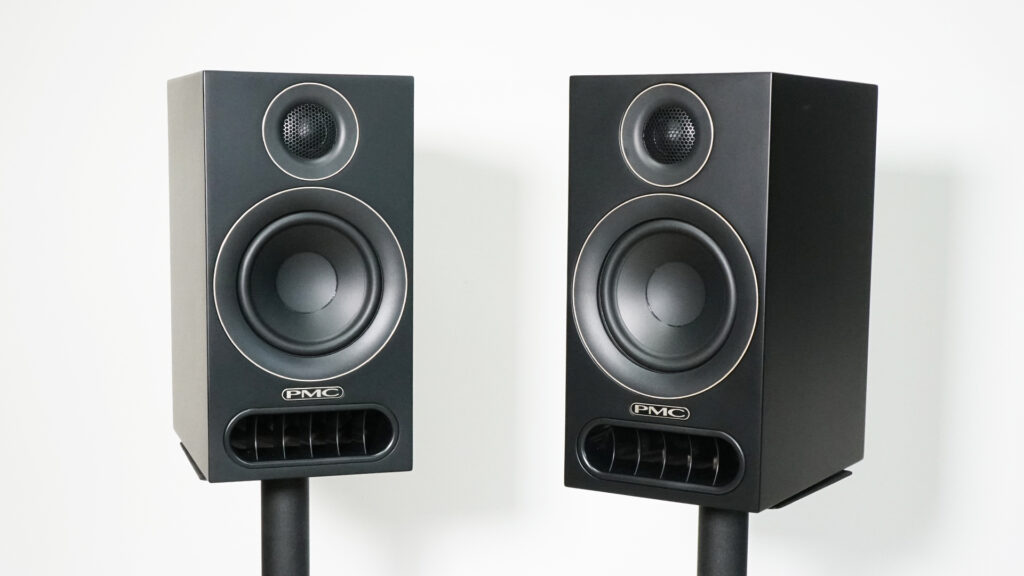
It’s clear the prodigy1’s precise delivery is a solid match for the Attesa’s dynamics, allowing their combined sound to flow with sit up and take notice energy, and I just can’t help wondering how they’ll fare with even greater amplification. Introducing my reference Musical Fidelity M6 pre/power amps puts pay to this, highlighting that a) while they don’t need more power than the Roksan’s output, they’ll welcome it and b) better amps don’t reveal any otherwise hidden shortcomings (which can sometimes be the case when partnering high-end amps with mid-level speakers). Instead they simply revel in the upgrade. It’s a bit like taking a sportscar to a track day – day to day it puts a smile on your face but given it more to go at and you’ll have the same smile, only bigger.
I’ve been shying away from paying too much listening attention to The Beatles’ Now And Then release (24-bit/96kHz on Qobuz) as I’m on the fence about what this signifiees for the future of music, where the lines blur between remastering and AI. With the PMCs filling my airwaves, curiosity gets the better of me. In many ways how this track’s rendered with the MF amps in the background sums up the PMC’s abilities perfectly. There’s plenty of detail, dynamics, scale and resolve so that the artificial elements within the recording are kept just enough at bay, to convince you that this could be the recording it pretends to be, with the fab four reunited back in their glory days.
In summary
At this price point you’re almost spoilt for choice with the range of loudspeakers on offer from all the leading dedicated brands. Some may look more lavish in your home, others larger in comparison, promising more grunt – but judge with your ears and the PMC’s are hard to beat.
Give them a listen and its clear just how much of your hard earned has gone into their tech, drawing on PMC’s substantial experience for a sound that has clarity and musicality in equal measures. And with a low frequency response that’s more sophisticated than most, they’re great value at the price.


